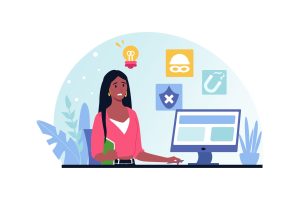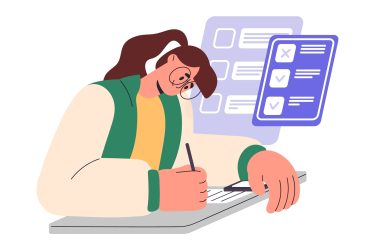SEO (Search Engine Optimization) specialists frequently use article spinners to generate more content. In order to improve website rank, current content is put though a spinner to create a vaguely similar text. It has little informational value; however, leads to potentially higher SEO results, as search algorithms find it difficult to track the match between two texts. Goal of spinners is to paraphrase a text, so that it seems to be original (Zhang et al, 2014). Well, software like this cannot stay isolated for a long time, it started to be used in education. How is this an issue for teachers and students? Firstly, and the most importantly, paraphrasing does not mean that a text can be regarded as an original piece of work. It still requires citation. Secondly, students tend to use article spinners to submit papers for similar assignments. Handing in identical papers, even if written by the student himself/herself, is considered to be a self plagiarism. It is expected of a student to write each paper from scratch. Thirdly, majority of article spinners generate poorly written content. Distinctive features of spun articles – they are hard to read, sound incomprehensible and lack flow. While paraphrasing is an essential part of the learning process, as it shows how well student can conduct a research and understand a subject, it is crucial to put an effort into an analysis of a text and spend time writing what you have learned in your own words. Using Internet based paraphrasing tools: Original work, patchwriting or facilitated plagiarism?, wrote: “The fact remains that taking another author’s work, processing it through an online paraphrasing tool then submitting that work as ‘original’ is not original work where it involves the use of source texts and materials without acknowledgement”. Their research reviews how plagiarism detectors can spot similarities after article spinners (Rogerson&McCarthy, 2017). Here is a review by Kevin Muldoon (2018) including information on of how well PlagiarismCheck.org handles spinners. Reference: Rogerson, A.M. & McCarthy, G. Int J Educ Integr (2017) 13: 2. https://doi.org/10.1007/s40979-016-0013-y Zhang, Qing & Y. Wang, David & M. Voelker, Geoffrey. (2014). DSpin: Detecting Automatically Spun Content on the Web. 10.14722/ndss.2014.23004.
Article spinners in education
July 16, 2018

Discover how PlagiarismCheck.org can empower your workflow!
Get demoRelated articles

20 February 2025
Google AI chatbot Gemini caught plagiarizing: PlagiarismCheck’s research
If you use Google's AI chatbot, Gemini (former Bard) to produce content, be care... Read more

20 February 2025
Can Teachers Detect Plagiarism?
One needs to study millions of resources and reflect on other opinions to form p... Read more

19 February 2025
Can Turnitin Detect Undetectable AI? A Comparison with TraceGPT by PlagiarismCheck.org
Introduction:
AI tools for writing are rapidly evolving, which is excellent. Bu... Read more

19 February 2025
Can schools detect AI writing?
The rise of AI-generated writing: unveiling the challenges
Within the evolvin... Read more

19 February 2025
Can universities detect AI?
Is it possible to detect whether students use AI tools, like СhatGPT or Gemini ... Read more

19 February 2025
What is maximim plagiarism percentage allowed?
The world is constantly changing, and so are our beliefs about it. That is why w... Read more